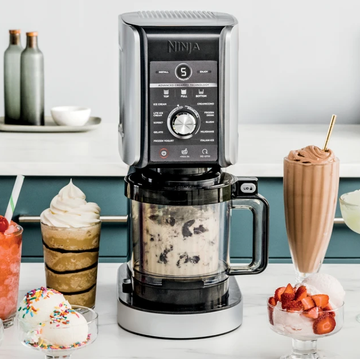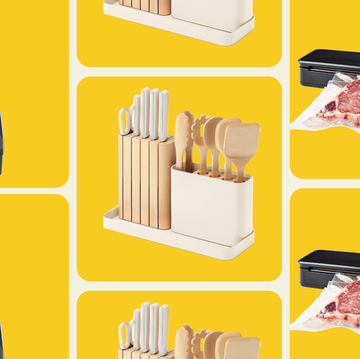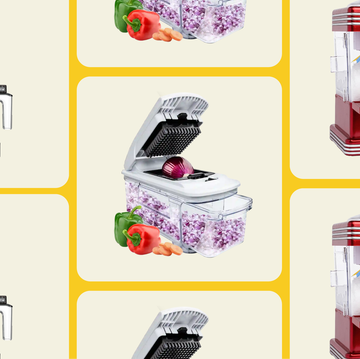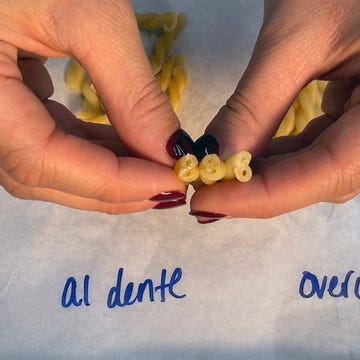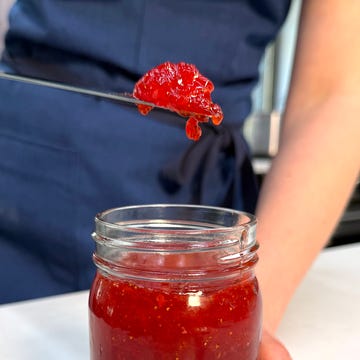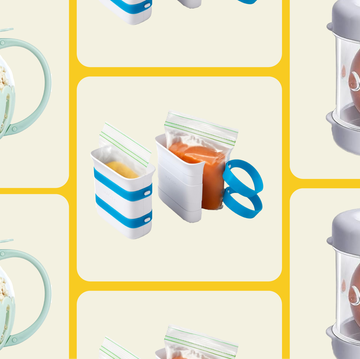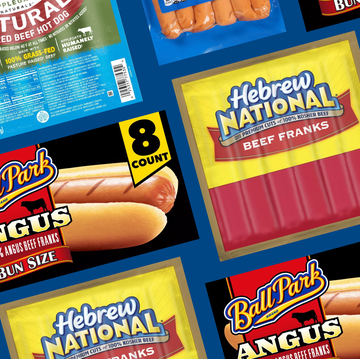Don't forget to pin it for later!
Low-Fat Yogurt
 Getty Images
Getty ImagesYou know what tastes good? Fat. So when a brand's recipe developers remove it from yogurt, they've got to supplement the flavor somehow. They usually turn to sugar to do so, which explains why a serving of low-fat yogurt could have close to 30 grams of sugar.
Advertisement - Continue Reading Below
Balsamic Vinegar
 Getty Images/StockDisc
Getty Images/StockDiscItalian nonnas would scoff at the American process of making this stuff. Companies often start with white wine vinegar and add caramel coloring for both color and sweetness. On top of that, cornstarch and xanthan gum are often included to thicken the liquid, but both of them up the sugar content.
Breakfast Cereal
 Getty Images
Getty ImagesSweet-sounding brands, like Fruit Loops and Cocoa Pebbles, aren't even the worst offenders. One cup of Raisin Bran packs 18 grams of sugar. It's in the dried fruit but also hiding in every flake, with the addition of corn syrup, high fructose corn syrup, and invert sugar. The latter helps products avoid crystallization.
Advertisement - Continue Reading Below
Barbecue Sauce
 Courtesy of Diethood
Courtesy of DiethoodMuch as we'd love to believe, the sweetness in this sauce isn't just from the tomatoes it's made with. In addition to regular ol' sugar, bottlers often sneak in molasses and corn syrup. And that's at minimum. Sweet Baby Ray's included pineapple juice concentrate too, making it contain 14 grams of sugar in just two tablespoons.
Canned Fruit
You know that fruit in its natural state can contain a lot of sugar. You should limit your intake, and avoid anything canned. The shelf-stable options are almost always kept in a syrup that's loaded with added sugars, like high fructose corn syrup and artificial coloring.
Advertisement - Continue Reading Below
Whole Grain Bread
 Anthony Johnson
Anthony JohnsonBuying this instead of white slices isn't necessarily any better. Many loaves come sweetened with honey, which isn't so bad, but others are doctored to taste better and can include high fructose corn syrup, GMO sugars (like ones made from sugar beets), or sucralose (the artificial sweetener you know better as Splenda).
Peanut Butter
 Getty Images
Getty ImagesThis'll give you pause next time you take a dip in a jar: Many leading brands are packed with sugary sweeteners. Sometimes it's white sugar, and sometimes it's in the form of cane syrup or coconut palm sugar. One spoonful can clock in at 2 grams — a lot considering you could easily spread four of those on a PB&J.
Advertisement - Continue Reading Below
Protein Bars
The shadiest thing about these bars is that you'll find grams of sugar hidden beyond what's listen in the sugar section. That's because they include something called sugar alcohol, which is actually classified as a carbohydrate. It's altered through a chemical process that turns it into a sugar substitute that can sweeten food and also keep it moist. That means you could be knocking back the 20-something grams of sugar listed on some bars and then some.
Advertisement - Continue Reading Below
Advertisement - Continue Reading Below
Advertisement - Continue Reading Below



